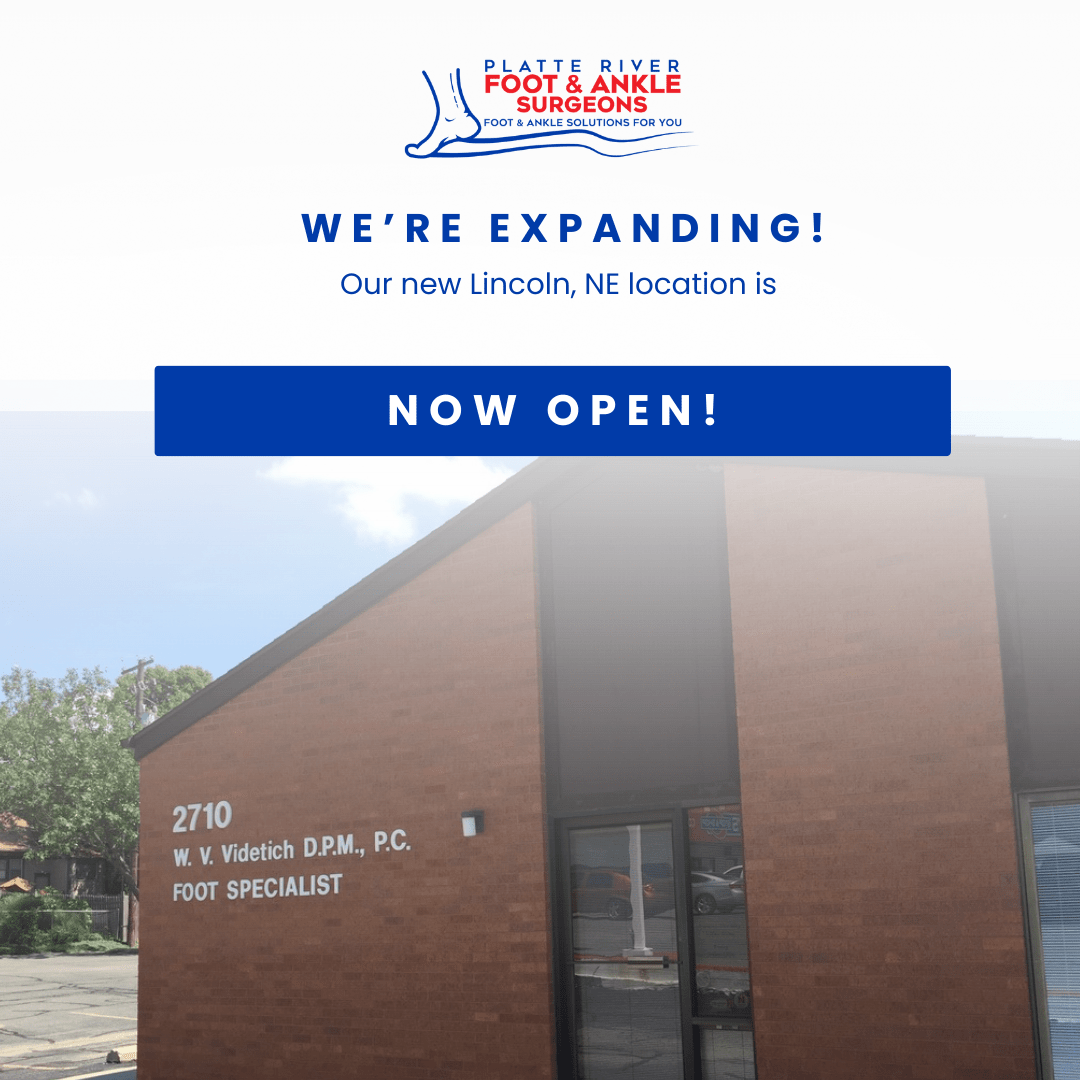You’ve sprained your ankle. Aside from the pain, having to be off your feet can really disrupt your schedule and reinforce the notion that you don’t want a repeat occurrence. Learn how to avoid chronic instability after an ankle sprain.
You’ve suffered a sprained ankle, which means you’ve stretched or torn one or more ankle ligaments, the bands of strong tissue that keep your ankle stable.
If you’re an active person, you want to return to the tennis court, dance floor, basketball court, or other active pursuit as soon as you can. However, returning to vigorous activity too soon, when your ankle isn’t fully healed, can lead to chronic ankle instability.
Our board-certified podiatrists at Platte River Foot & Ankle Surgeons treat many patients with ankle sprains. At our locations throughout Nebraska, we help you recover safely, lessening the likelihood of your ankle becoming chronically unstable.
Following are guidelines to help you keep your ankle healthy for the long term.
Follow the RICE method for your ankle sprain
As soon as you’ve sprained your ankle, take weight off of your leg. Your ankle has twisted abnormally. When you feel pain, it’s important to stop what you’re doing immediately so you don’t injure yourself further.
Taking care of your ankle sprain immediately after you’re injured is the best way to ensure a complete recovery without lasting weakness in your ankle.
Use the RICE (rest, ice, compression, elevation) method. Rest the ankle, ice the ankle area on and off during the day for a couple of days, use an elastic bandage, and elevate your ankle above your heart to reduce swelling.
Seek medical assistance
Ankle sprains vary in severity. We place ankle sprains in three categories: mild, moderate, and severe. If you have a moderate or severe sprain, you’ve torn a ligament, which requires a longer healing period than a mild sprain.
It’s impossible for you to determine the grade of your ankle sprain. Your Platte River Foot & Ankle surgeon has X-rays taken to determine how severely you’ve injured yourself. We develop a treatment plan accordingly.
Physical therapy/strengthening/balance/range-of-motion exercises
Strengthening exercises are a key to returning your ankle to full health. If you’re an athlete, you know how important strong muscles are to help support joints — in this case, your ankle joint.
If your ankle sprain is moderate or severe, you have physical therapy as part of your ankle rehabilitation. Your therapy includes balance and range-of-motion exercises.
However, you shouldn’t stop ankle exercises when physical therapy ends. You want strong ankles to help prevent another ankle sprain. The exercises also help ward off chronic instability.
Ankle brace
You may wear an ankle brace as part of your rehabilitation after spraining your ankle. The brace provides needed support and helps stop your ankle from rotating too far in one direction. You may need the brace when you engage in your sport if it involves twisting and turning.
Custom orthotics
We may prescribe custom orthotics for you if you’ve had a severe ankle sprain that could lead to instability in the future. Orthotics help correct faulty biomechanics, ease the pressure on your muscles, tendons, and ligaments, and aid your muscles in keeping your ankle stable.
Call Platte River Foot & Ankle Surgeons or book an appointment online today if you have ankle pain or other musculoskeletal concerns.




